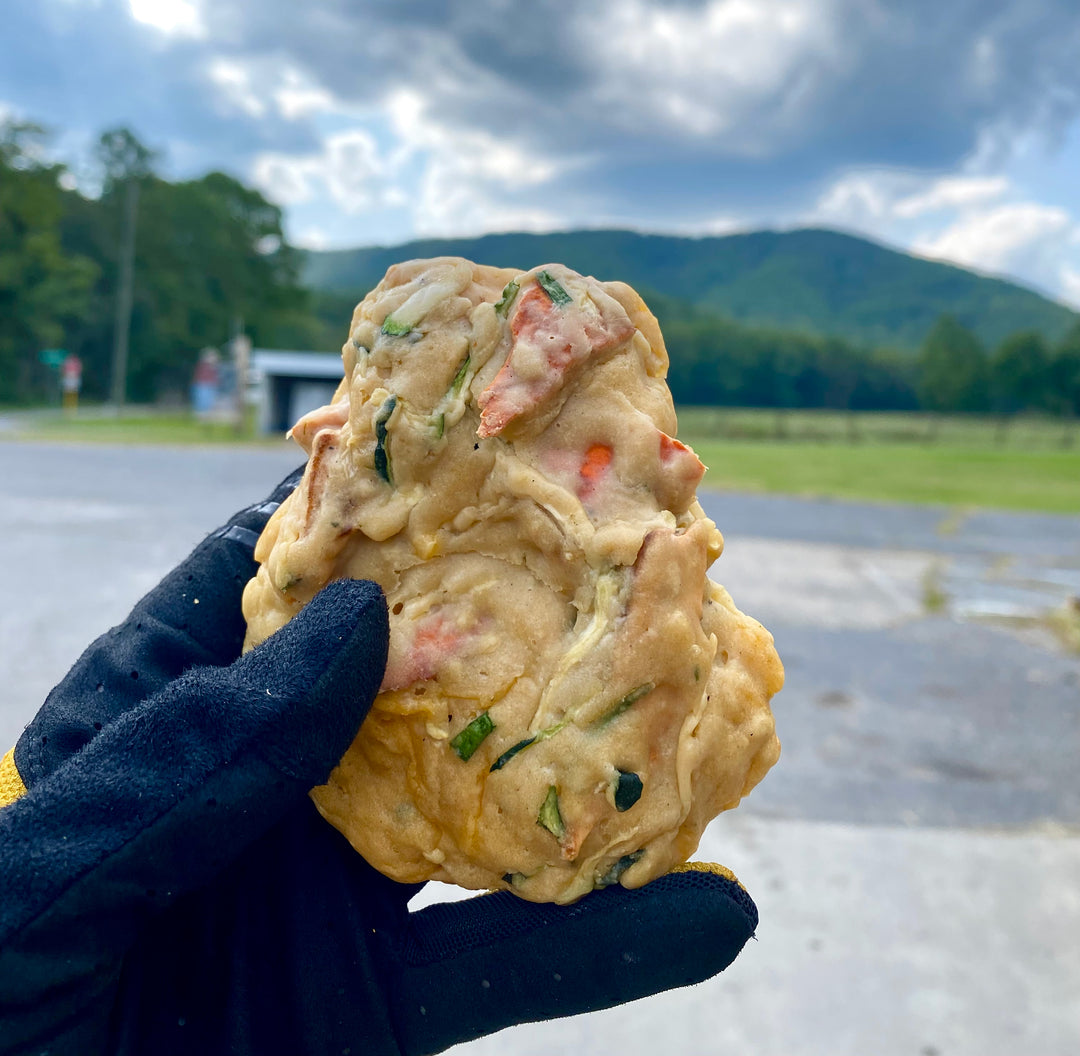Can food interfere with training adaptation? Signal Switches: Finding the Nutritional Sweet Spot for Endurance Adaptation

A study published in Nature Metabolism, a highly reputable journal (pubmed.ncbi.nlm.nih.gov), reports that acute hyperglycaemia, like the spike you get from large doses of high-GI carbs (glucose, dextrin, maltodextrin), dampens the molecular signalling required for training adaptations. In other words, heavy sugar loads can blunt the very gains you’re chasing while some fats enhance training effect. That matters for anyone who wants to stay in the sport for the long haul, because adaptation is the bridge between today’s workout and tomorrow’s performance. It’s telling that some elite athletes who practise near-constant carb loading are now showing pre-diabetic markers; the data remind us that fuelling strategy should enhance, not undermine, the stress-and-repair cycle we rely on to get fitter and stay healthy.

Training Adaptation vs. Nutrition: Finding the Sweet Spot (or fat spot)
Training is, at its core, a strategic form of stress. A hard run, ride, or lifting session depletes ATP, redistributes calcium, and triggers the release of reactive oxygen species (ROS) into the muscle. Those acute disruptions flip stress-sensitive molecular “switches” that rebuild the engine a little stronger:
-
AMP-activated protein kinase (AMPK) senses low cellular energy (high AMP/ATP) and kick-starts glucose uptake and fat oxidation.
-
PGC-1α acts downstream of AMPK to drive mitochondrial biogenesis—more little power plants in each fibre. Building metabolic metabolic muscle.
-
mTORC1 swings in after protein-rich meals or resistance work, boosting myofibrillar protein synthesis so fibres grow and repair.

With enough recovery, the net effect is a faster, stronger, more fatigue-resistant athlete.
Nutrients That Support Those Signals
-
Protein & Leucine
Twenty-plus grams of high-quality protein after resistance exercise spikes mTOR phosphorylation and myofibrillar protein synthesis above feeding alone (pubmed.ncbi.nlm.nih.gov). The leucine trigger plus insulin’s permissive effect make protein timing a genuine “easy win”. -
Polyphenols & Plant Bio-actives
Quercetin, resveratrol and other polyphenols modestly improve endurance in meta-analysis (~2 % performance bump) and promote mitochondrial biogenesis in animal and human models (pubmed.ncbi.nlm.nih.gov, pubmed.ncbi.nlm.nih.gov). Their mild pro-oxidant stress seems to augment the AMPK–PGC-1α axis rather than short-circuit it. -
Carbohydrate Periodisation (a.k.a. “Train-Low, Recover-High”+adding fats to nutrition plan)
Restricting carbs and sourcing energy from fats around selected sessions can amplify exercise-induced PGC-1α and other metabolic genes, while restoring glycogen at the right times protects performance (pubmed.ncbi.nlm.nih.gov). It’s a tactical nudge, not a blanket low-carb prescription.
Nutrients (and Practices) That Interfere with Adaptation
-
Chronic High-GI Carbohydrate Overload
The fashionable “120 g/h every ride” mantra can backfire. In rodent and human models, prolonged hyperglycaemia blunts the very aerobic remodelling athletes chase, with some pros even showing pre-diabetic blood patterns in the off-season (pubmed.ncbi.nlm.nih.gov). -
Mega-Dose Antioxidants
ROS aren’t just cellular vandals; they’re messengers for adaptation. Daily vitamin C + E megadoses prevented improvements in insulin sensitivity and endogenous antioxidant defences after training in healthy adults (pubmed.ncbi.nlm.nih.gov). Reviews continue to caution athletes against routine high-dose antioxidant use for the same reason (pubmed.ncbi.nlm.nih.gov). -
Excess Post-Exercise Simple Sugars Without Energy Need
Slamming sugary drinks immediately after every light session spikes insulin, suppresses AMPK activity, and may tilt recovery toward glycogen resynthesis at the expense of mitochondrial signalling—counter-productive if every workout turns into a dessert buffet.

Pulling It Together
-
Match the fuel to the goal of the session. High-intensity or long races need dependable carbs; base rides can sometimes run lower to up-regulate fat oxidation.
-
Dose protein (0.3 g/kg) after muscle-damaging work and spread the rest across meals to keep mTOR humming (1.4-2g/kg daily).
-
Focus on colour, plants, and minimally-processed foods—you’ll get performance-promoting polyphenols without the need for exotic pills.
-
Save antioxidant supplements for clinically-deficient situations, not day-to-day insurance.
-
Remember context trumps any single “super nutrient.” The interaction between training load, timing, and total diet matters more than isolated macros or molecules.
A healthy diet isn’t just fuel; it’s information. Choose wisely, and you amplify the very switches that training flips. Choose poorly, or excessively, and you risk telling those switches to stand down. Balance, nuance, and a dash of curiosity will keep the adaptation engine running strong.

References
-
MacDonald TL et al. Hyperglycaemia is associated with impaired muscle signalling and aerobic adaptation to exercise. 2020. (pubmed.ncbi.nlm.nih.gov)
-
Ristow M et al. Antioxidants prevent health-promoting effects of physical exercise in humans. 2009. (pubmed.ncbi.nlm.nih.gov)
-
Merry T & Ristow M. Dietary antioxidants as modifiers of physiologic adaptations to exercise. 2015. (pubmed.ncbi.nlm.nih.gov)
-
Somerville V et al. Polyphenols and performance: systematic review and meta-analysis. 2017. (pubmed.ncbi.nlm.nih.gov)
-
Dolinsky VW et al. Resveratrol and/or exercise counteract aging-associated decline of endurance; targeting mitochondrial biogenesis. 2017. (pubmed.ncbi.nlm.nih.gov)
-
Burd NA et al. Resistance exercise enhances mTOR and MAPK signalling in human muscle over that seen at rest after bolus protein ingestion. 2010. (pubmed.ncbi.nlm.nih.gov)
-
Impey SG et al. Responses to exercise with low carbohydrate availability on muscle glycogen and cell signalling: systematic review and meta-analysis. 2024. (pubmed.ncbi.nlm.nih.gov)
-
Burke, L. M., & Hawley, J. A. (2018). Swifter, higher, stronger: what’s on the menu? Science, 362(6416), 781-787. Link
-
Witard , O. C., et al. (2022). Carbohydrates and endurance exercise: a narrative review. Nutrients, 14(3), 651. Link
-
Malik, V. S., et al. (2010). Sugar-sweetened beverages and risk of metabolic syndrome and type 2 diabetes. Diabetes Care, 33(11), 2477-2483. Link
-
Stanhope, K. L. (2016). Sugar consumption, metabolic disease and obesity: The state of the controversy. Critical Reviews in Clinical Laboratory Sciences, 53(1), 52-67. Link
-
Te Morenga, L., et al. (2014). Dietary sugars and cardiometabolic risk: systematic review and meta-analyses of randomized controlled trials of the effects on blood pressure and lipids. The American Journal of Clinical Nutrition, 100(1), 65-79. Link
-
Nature Medicine (2025). Health effects associated with consumption of processed meat, sugar-sweetened beverages and trans fatty acids: a Burden of Proof study. Link







Leave a comment